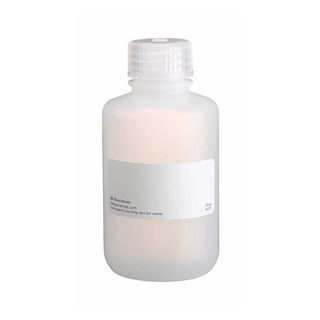-
Training
- Flow Cytometry Basic Training
-
Product-Based Training
- BD FACSDiscover™ S8 Cell Sorter Product Training
- Accuri C6 Plus Product-Based Training
- FACSAria Product Based Training
- FACSCanto Product-Based Training
- FACSLyric Product-Based Training
- FACSMelody Product-Based Training
- FACSymphony Product-Based Training
- HTS Product-Based Training
- LSRFortessa Product-Based Training
- Advanced Training
-
- BD FACSDiscover™ S8 Cell Sorter Product Training
- Accuri C6 Plus Product-Based Training
- FACSAria Product Based Training
- FACSCanto Product-Based Training
- FACSLyric Product-Based Training
- FACSMelody Product-Based Training
- FACSymphony Product-Based Training
- HTS Product-Based Training
- LSRFortessa Product-Based Training
- United States (English)
-
Change country/language
Old Browser
This page has been recently translated and is available in French now.
Looks like you're visiting us from {countryName}.
Would you like to stay on the current country site or be switched to your country?


.png)

Flow cytometric analysis of CDX-2 expression on human DLD-1 cells. Cells from the human DLD-1 (Colorectal adenocarcinoma, ATCC CCL-221) cell line were fixed with BD Cytofix™ Fixation Buffer (Cat. No. 554655) and washed with BD Pharmingen™ Stain Buffer (FBS) (Cat. No. 554656). The cells were then permeabilized and stained in BD™ Phosflow Perm/Wash Buffer I (Cat. No. 557885) with either PE Mouse IgG1, κ Isotype Control (Cat. No. 554680; dashed line histogram) or PE Mouse Anti-CDX-2 antibody (Cat. No. 563428; solid line histogram). The fluorescence histograms were derived from gated events with the forward and side scattered-light characteristics of intact cells. This antibody also works with cells permeabilized with BD Cytofix/Cytoperm™ Fixation and Permeabilization Solution (Cat. No. 554722). Flow cytometric analysis was performed using a BD™ LSR II Flow Cytometer System.
.png)

BD Pharmingen™ PE Mouse Anti-Human CDX-2
.png)
Regulatory Status Legend
Any use of products other than the permitted use without the express written authorization of Becton, Dickinson and Company is strictly prohibited.
Preparation And Storage
Product Notices
- This reagent has been pre-diluted for use at the recommended Volume per Test. We typically use 1 × 10^6 cells in a 100-µl experimental sample (a test).
- An isotype control should be used at the same concentration as the antibody of interest.
- Caution: Sodium azide yields highly toxic hydrazoic acid under acidic conditions. Dilute azide compounds in running water before discarding to avoid accumulation of potentially explosive deposits in plumbing.
- Source of all serum proteins is from USDA inspected abattoirs located in the United States.
- For fluorochrome spectra and suitable instrument settings, please refer to our Multicolor Flow Cytometry web page at www.bdbiosciences.com/colors.
- Please refer to www.bdbiosciences.com/us/s/resources for technical protocols.
Companion Products




The M39-711 monoclonal antibody reacts with caudal-type homeobox transcription factor 2 (CDX-2). In embryonic development, CDX-2 is first expressed in the outer layer of the morula and later in the trophoblast, but not in embryonic stem cells. Along with Oct3/4, it is involved in the segregation of the trophoectoderm lineage from the inner cell mass. In the adult, CDX-2 expression is limited to the mucosa of the small and large intestines, where it regulates the synthesis of several intestine-specific proteins. Loss of CDX-2 expression is observed in some colorectal carcinomas, while gain of CDX-2 expression has been observed in gastric tumors and acute myeloid leukemias.

Development References (6)
-
Hinoi T, Loda M, Fearon ER. Silencing of CDX2 expression in colon cancer via a dominant repression pathway. J Biol Chem. 2003; 278(45):44608-44616. (Biology). View Reference
-
Qualtrough D, Hinoi T, Fearon E, Paraskeva C. Expression of CDX2 in normal and neoplastic human colon tissue and during differentiation of an in vitro model system. Gut. 2002; 51:184-190. (Biology). View Reference
-
Ralston A, Rossant J. Genetic regulation of stem cell origins in the mouse embryo. Clin Genet. 2005; 68(2):106-112. (Biology). View Reference
-
Rawat VP, Cusan M, Deshpande A, et al. Ectopic expression of the homeobox gene Cdx2 is the transforming event in a mouse model of (12;13)(p13;q12) acute myeloid leukemia. Proc Natl Acad Sci U S A. 2004; 101(3):817-822. (Biology). View Reference
-
Scholl C, Bansal D, Döhner K, et al. The homeobox gene CDX2 is aberrantly expressed in most cases of acute myeloid leukemia and promotes leukemogenesis. J Clin Invest. 2007; 117(4):865-868. (Biology). View Reference
-
Tsukamoto T, Mizoshita T, Tatematsu M. Gastric-and-intestinal mixed-type intestinal metaplasia: aberrant expression of transcription factors and stem cell intestinalization. Gastric Cancer. 2006; 9(3):156-166. (Biology). View Reference
Please refer to Support Documents for Quality Certificates
Global - Refer to manufacturer's instructions for use and related User Manuals and Technical data sheets before using this products as described
Comparisons, where applicable, are made against older BD Technology, manual methods or are general performance claims. Comparisons are not made against non-BD technologies, unless otherwise noted.
For Research Use Only. Not for use in diagnostic or therapeutic procedures.
Report a Site Issue
This form is intended to help us improve our website experience. For other support, please visit our Contact Us page.